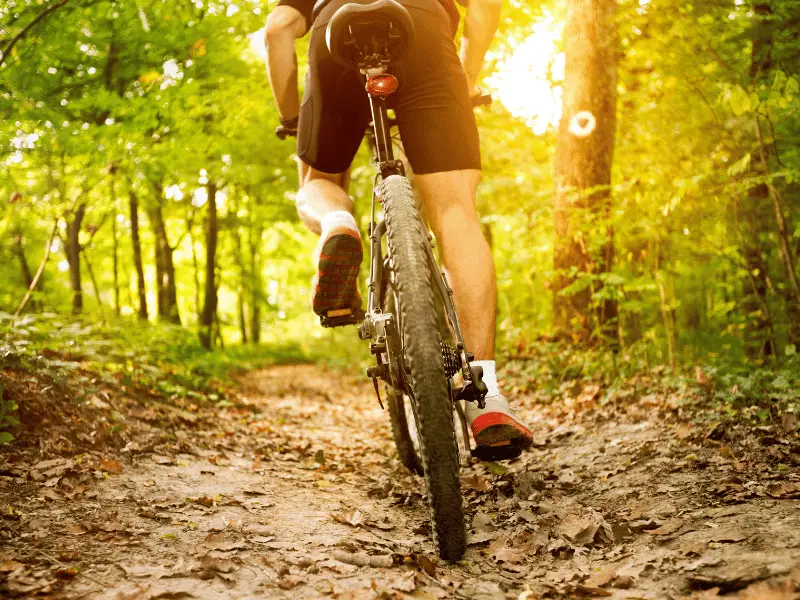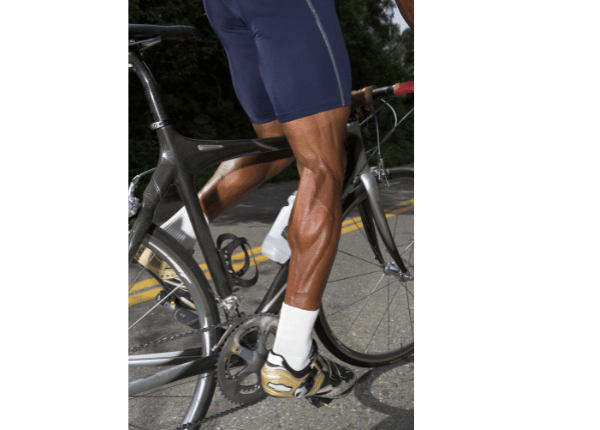
Mountain biking is an exhilarating sport that can provide a great workout for the entire body. One of the most common questions among mountain bikers is whether the sport can help build leg muscles. While mountain biking is an excellent cardiovascular exercise that can burn calories and improve overall fitness, the answer to this question is not straightforward.
Biking for short to hard intervals can help shed extra fat and build leg muscles. However, the type of muscle developed from biking is not the same as that developed from weightlifting. Biking primarily engages the quadriceps, hamstrings, and glutes, which can lead to increased muscle mass and strength in these areas.
While mountain biking can help build leg muscles, it may not be the most effective way to achieve significant muscle growth. Biking is more aerobic, where the load on your legs is much lower than your maximum strength effort, but you do it for much longer periods. Therefore, if you are looking to build significant muscle mass in your legs, you may need to supplement your mountain biking routine with additional strength training exercises.
Muscles Used in Mountain Biking
Quadriceps
Mountain biking heavily relies on the quadriceps muscles, which are the large muscles located at the front of the thigh. These muscles are responsible for extending the knee joint and generating power to pedal the bike. During the power phase of pedaling, the quadriceps muscles contract to push down on the pedals from the 12 o’clock position towards the 6 o’clock position.
Hamstrings
The hamstrings are located at the back of the thigh and work in conjunction with the quadriceps to pedal the bike. During the recovery phase of pedaling, the hamstrings contract to pull the pedals back up to the 12 o’clock position. They also provide stability to the knee joint and help to prevent injuries.
Glutes
The gluteus muscles are located in the buttocks and are responsible for hip extension, which is crucial for generating power during pedaling. The glutes work in conjunction with the quadriceps and hamstrings to provide overall stability and control during mountain biking.
Calves
The calf muscles are located on the back of the lower leg and are responsible for ankle flexion and extension, which is crucial for pedaling. They also help to stabilize the ankle joint and provide overall support to the lower leg.
Overall, mountain biking is a great way to work out and build leg muscles. By working out the quadriceps, hamstrings, glutes, and calves, mountain biking can help to improve leg strength, muscle endurance, and overall fitness.
Benefits of Mountain Biking for Leg Strength
Mountain biking is a great way to build leg strength and improve overall fitness. It is a low-impact exercise that can be enjoyed by people of all ages and fitness levels. Here are some of the benefits of mountain biking for leg strength:
Improved Endurance
Mountain biking is an excellent way to improve endurance. It helps to build cardiovascular fitness, which is essential for building endurance. When you ride a mountain bike, you will be using your legs to pedal, and this will help to build leg strength and endurance. You can gradually increase the intensity and duration of your rides to improve your endurance over time.

Increased Muscle Activation
Mountain biking is an effective way to activate and strengthen the muscles in your legs. It engages the quadriceps, hamstrings, glutes, and calves, which are all essential for leg strength. The constant pedaling motion of mountain biking helps to build these muscles and improve their endurance. You can also incorporate hill climbs and sprints into your rides to increase muscle activation and build leg strength.
Low-Impact Exercise
Mountain biking is a low-impact exercise that is easy on your joints. Unlike running or other high-impact exercises, mountain biking puts less stress on your knees, ankles, and hips. This makes it an ideal exercise for people who want to build leg strength without putting too much strain on their joints. The low-impact nature of mountain biking also makes it an excellent exercise for people recovering from injuries or those with joint pain.
Overall, mountain biking is an excellent way to build leg strength and improve overall fitness. It is a fun and enjoyable exercise that can be done alone or with friends. By incorporating mountain biking into your fitness routine, you can improve your endurance, increase muscle activation, and enjoy the many benefits of a low-impact exercise.
Considerations for Building Leg Strength through Mountain Biking
Intensity and Duration
When it comes to building leg strength through mountain biking, the intensity and duration of your rides are crucial factors to consider. For instance, shorter rides at a higher intensity can help you build strength and power, while longer rides at a lower intensity can help you develop endurance and improve your cardiovascular health.
It is important to gradually increase the intensity and duration of your rides to avoid injury and burnout. Additionally, incorporating interval training and hill repeats can help you challenge your legs and build strength more effectively.
Terrain and Resistance
The terrain you ride on and the resistance you encounter can also impact your leg strength development. Riding on technical terrain, such as rocky or rooty trails, requires more leg strength and can help you build muscle more effectively. Additionally, riding with a heavier bike or adding resistance to your bike, such as by using a resistance trainer, can also help you build leg strength.
However, it is important to balance challenging terrain and resistance with recovery and rest days to avoid overtraining and injury.
Cross-Training
While mountain biking is a great way to build leg strength, incorporating cross-training exercises can help you develop a more well-rounded fitness routine and prevent muscle imbalances. Strength training exercises, such as squats and lunges, can help you build leg muscle and improve your overall strength and stability.
Additionally, activities such as yoga and stretching can help improve your flexibility and prevent injury. Incorporating cross-training exercises can also help prevent burnout and keep your workouts varied and engaging.
Final Thoughts
Mountain biking is a great way to improve your cardiovascular health and build leg muscles. By pedaling, you work out the muscles of your buttocks, hamstrings, quads, calves, and even shoulders and arms.
While mountain biking will not make your legs bulky like weightlifting, it will help tone and strengthen them. It’s a low-impact exercise that can be enjoyed by people of all ages and fitness levels.
It’s important to keep in mind that building leg muscles through mountain biking will take time and consistent effort. You won’t see results overnight, but with patience and dedication, you can achieve your fitness goals. Remember to always wear proper safety gear, such as a helmet and knee pads, and start with easier trails before moving on to more challenging ones.
